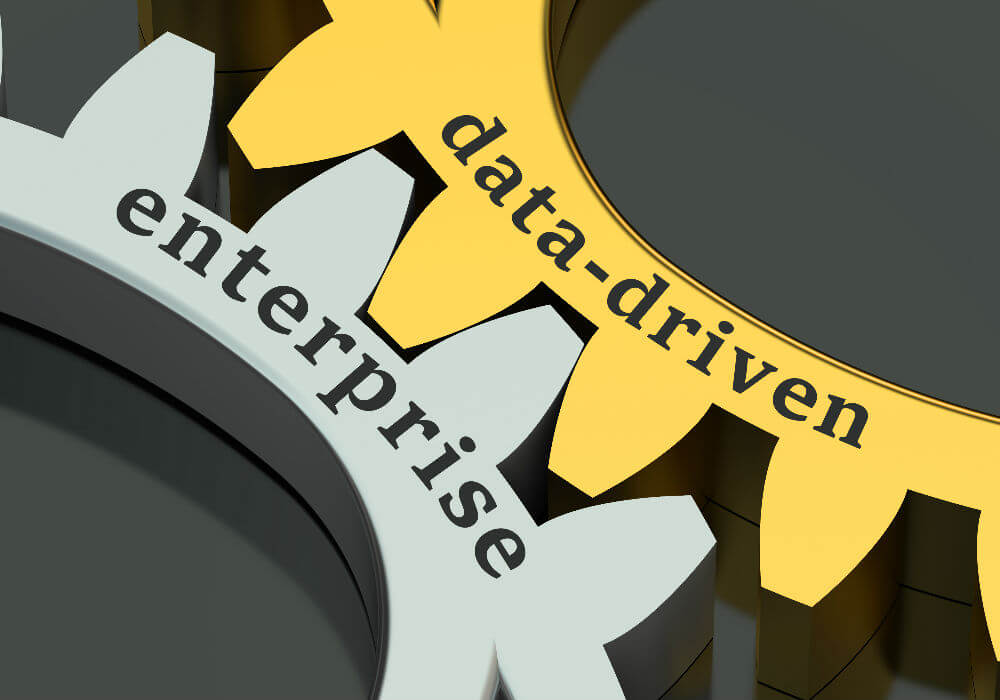
SUMMARY
By 2020, 1.7 Megabytes Of Data Will Be Created Every Second, For Every Person On Earth
Although every entrepreneur or small business has different goals, they all operate under the same general premise—they want to transform their ideas into a successful business. But, the way in which entrepreneurs go about achieving their goals has shifted significantly over recent years.
The biggest change?
More professionals recognize the power of big data.
If you’re a business-savvy entrepreneur, you’ve surely followed the growth of companies like Amazon and Apple. Their continuous success is no accident – these massive companies have embraced the importance of analyzing data and developing actionable insights based on that analysis.
Consider these statistics:
- By 2020, 1.7 megabytes of data will be created every second, for every person on Earth (source).
- For an average Fortune 1000 company, a 10% increase in data accessibility will result in over $65 million in additional net income (source).
Now, you may be thinking:
“That sounds great, but I’m no Amazon or Apple.” Fear not: you may not have the resources of a mega-corporation, but even the most successful businesses started somewhere. Keep reading to learn how to be a more data-driven entrepreneur– no matter how established your business is.
Set Tangible Objectives
A crucial aspect of any data-driven business strategy—including marketing initiatives, sales efforts, or growth tactics—is the ability to accurately measure and scale your results. Because of this, you must have clear, measurable objectives in order to operate a truly data-driven business.
Remember, your objective isn’t to become data-driven. Rather, your objective is to use data to guide your decision-making process to ultimately achieve business success. What is success? That part is up to you!
Is your primary objective to elevate your personal brand through social media? Or perhaps it’s to get funding for your newest product. No matter what the end goal is, you will need data to get there.
Use The Data You Have
Now that you have clear goals and objectives, it’s time for the important part– collecting relevant data. This may seem daunting for an entrepreneur or small business that has limited access to data and analytics platforms. Fortunately, technological advancements and the proliferation of information via the internet, have both made data much more accessible—to everyone.
Although there are many different ways to gather data here are a few ideas to get you started:
Customer data analysis: No matter what industry you work in or how big your business is, your customers determine how successful you are. Every time someone interacts with your business, you have the opportunity to collect valuable data.
Think about it, when a customer inquires about you, your brand, or your services, there is some sort of information exchange—you receive data points like their name, age, geographic location and contact information. Each of those data points can lead to actionable insights. So, we recommend, if you aren’t already, keep close track of this data.
If you work at a more established organization, you likely already use a CRM or contact database to manage contact and customer data. If this is the case, analyze a segment of your best customers and identify common traits between them. This can uncover important trends and insights about the people who are interested in you and your brand.
Behavioral data: Whether you operate your business online or in a brick and mortar location, in our technologically-driven era, a company’s web presence is critical. Therefore, website and online behavior data is a gold mine for business insights.
For example, pretend you operate a new compliance training business. You take a look at your website analytics and notice a certain group of people from one geographic location have an astronomical bounce rate. After doing your research, you realize your main offering only applies to certain states. Using this information, you tailor your services and messaging to take this into account.
Competitor analysis: Let’s say you just started a brand new company and have next to no resources. Just because you don’t have a ton of your own data doesn’t mean you’re out of luck. Take a look at competitors, industry leaders, and professional research. Use existing data to inform your business decisions until you have the resources to gather your own insights.
These are just a few ways to start collecting and analyzing data. The key to a successful data-driven business strategy is to figure out what data points impact your ability to reach your objectives. This may not be easy or obvious to figure out immediately—so, we recommend you think outside the box, brainstorm different ideas, and test a variety of data sources and tools. This brings us to our next point—tools and technology.
Invest In Technology That Facilitates Data-Driven Decisions
The success of your data-driven initiatives lives and dies in your technology stack. Of course, you can collect and analyze data manually, but not without eating up a significant amount of time and resources.
We understand, a young business might not have the budget to buy the latest and greatest tools. But, there are plenty of affordable, and even free, tools that you can use to compliment your data-driven objectives.
Here are some important considerations to make when investing in new technology:
Integration: If your tools don’t integrate, your data will be kept in separate silos. This leads to less visibility, limited insights, and even inaccuracies.
Prioritize ease-of-use: Startups and entrepreneurs are strapped for time and resources, therefore it’s important not to invest in technology that’s difficult to use.
Remember data hygiene: The phrase “garbage in, garbage out,” comes to mind here. What we mean is this: If you start with bad data, you’ll end up with nothing but bad and uninformed insights.
Apply Data To Decision-Making
Now that you have organised your data and invested in the right tools, it’s time to put your data to work. We know, this may seem like a vague instruction, especially with the vast number of metrics at your disposal. But remember, start with one single objective and go from there.
Let’s look at a simple example:
You offer personalized fitness programs via an online subscription service. Traffic to your website has increased over recent months, but conversions haven’t risen at all. Using Google Analytics, the company collects web traffic data to look for the source of their problem. They learn that most of their new traffic leads to a landing page that asks visitors to fill out a 12-question fitness survey to receive access to an exclusive video.
The entrepreneur then conducts A/B testing by creating a version of the landing page that features fewer form fields and a more prominent CTA. With the new version of the landing page, bounce rate decreases and 25% more visitors complete the form.
In this example, the startup company turns data into actionable insights with relatively few resources and a completely free technology. Although this is a more obvious example, the same concept applies to all areas of business—customer service, productivity, executive buy-in, and much more.
Be Agile
Growing a business requires agility when it comes to decision-making. After running data analysis, many companies wait for months of reporting and discussion before taking the next step. Here’s where entrepreneurs and startups have an advantage– without the burden of large teams and executive boards, you are free to make decisions quickly.
We aren’t saying you have to rush data analysis or reporting. But, the faster you take action on your data-driven insights, the more rapid your growth will be.


























